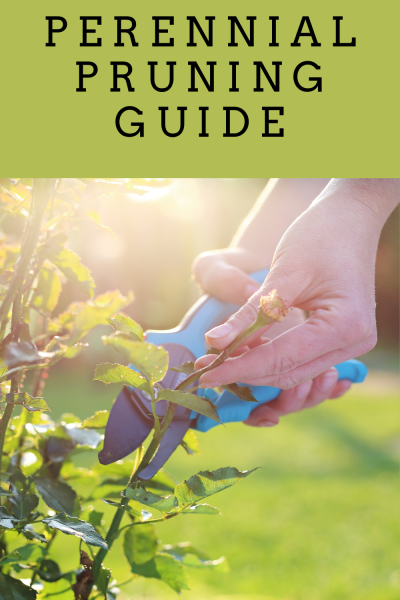Not sure how much you should prune your perennials? I have another great gardening guide from my friend Sargam! Today she’s sharing a guide to pruning perennials in your garden.
Guide to cutting back perennials in the fall
We strongly encourage gardeners to leave the foliage on perennials over winter. It not only adds beautiful winter interest but also serves as food and habitat for wildlife. Leaving on foliage also helps protect the crown of the plant, maximizing the chances of spring success.

Best Perennials To Leave Untouched Over Winter.
Gardening can be a lot of work; take some off the load off by cutting down your list for pruning this season.
Some of the plants you can skip on pruning are Ornamental Grasses; Rudbeckia Hirta, also known as Black-Eyed-Susan; Echinacea, commonly known as the Coneflower; Gaillardia, also known as Blanket Flower; Coreopsis; commonly called Tickseed; Day-Lillies; and Sedum.
Hardy semi-evergreen perennials
The perfect way to add a touch of color to any landscape, leaving these plants unpruned will add a fresh pop of brightness to an otherwise drab winter garden. Some such perennials are Cranesbill or the Hardy Geranium; Lamium Maculatum also known as Dead Nettle; Heuchera; Sweet Williams; Liriope Muscari Royal Purple; Hellebore Winterbells; the list could go on for a while, but the best way to find out is to leave it over winter and see to see how it fairs.
Grow tip: Customize your pruning routine per plant, giving them individual attention rather than taking the whole garden bed down.
Be selective in cutting back; sometimes, all you need to do is cut spent blooms by tracing them down to the stem.
However, there are certain plants you might have to cut back due to diseases like powdery mildew or insects like slugs and snails or prevent the plant’s crown from suffocating due to fallen over foliage. Pruning back some plants can also open up your landscape, giving it a more tidy appearance. Let’s dig into it.
Guide to Pruning Perennials: Plants that might need to be cut back
Some plants are prone to diseases such as powdery mildew, which commonly targets Monarda or Bee Balm; Goldenstar; Peonie; Phlox; Fall blooming Sneezeweed.
Grow Tip: Spraying plants in the evening with a mix of neem oil and water keeps mildew and bugs at bay.
Another hack is to use 1 cup whole vitamin D milk and 1/2 cup water to spray the foliage on a sunny morning; the calcium in the milk reacts with the sunlight to kill mildew.
Some plants are prone to flopping over and need a trim to let the crown breathe. These include the Bearded Iris; Helianthus; Penstemon; Salvia; Yarrow; Crocosmia; Hardy Begonia, and more.
Grow tip: Consider trimming back some foliage rather than completely deadheading.
Best way to lighten the load off perennials
Some plants do well with pruning them back to half their current size; this gives the plant a tidy appearance while leaving foliage for wildlife.
Best Time For Fall Pruning
The ideal time to cut back foliage is when the plants have gone into dormancy, and all the foliage has browned or died back. This usually happens about three to four hard frosts in to the colder season.
Best way to fully cut back perennials
Trace down the foliage and trim the plant two inches above the ground. Leaving stems on will help you identify the plant during spring before it has re-sprouted. This is also an excellent time to treat the ground for pests to eliminate the chances of eggs overwintering in the soil.
Grow tip: Sanitize shears and discard any foliage that shows signs of disease to prevent spread.
We hope this guide to pruning perennials is helpful! What will you be leaving to overwinter this year? Let us know in the comments below.
By Sargam Merchant.
For Home & Travel Cafe


 Follow
Follow